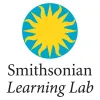Take a look inside 7 images
Smithsonian Learning Lab
Pros: Inviting interface, powerful tools, and the ability to curate, annotate, and share over 1 million Smithsonian resources.
Cons: The teacher and student dashboards could use an introductory tutorial.
Bottom Line: This thoughtfully crafted, open-ended curation and creation tool has a place in most classrooms.
Because of its flexible design, teachers can use the Smithsonian Learning Lab in many ways. At its most basic level, teachers can create collections aligned with their classroom content. The collections could be projected for full-class discussion or viewed by individual students. Teachers and students can share collections with embed codes, on social media, or with a link.
Teachers can make the collections more interactive by including annotations, quizzes, and discussion questions. To increase engagement and critical thinking, teachers could ask students to remix and annotate a collection or even search the Smithsonian resources to create an entirely new collection. The Learning Lab can be used to learn more about a topic, teach technology skills, and sharpen critical-thinking skills through the curation process.
The Smithsonian Learning Lab brings the beauty, scholarship, and depth of over 1 million museum artifacts into your classroom. Its main features are searching and curating the resources for classroom use. Users can search for resources including images, videos, texts, audio recordings, and learning activities. Searches can be refined to include specific types of resources and museum locations. Once useful artifacts are identified, users can add these to their own collections and annotate the items. Each artifact uploaded by Smithsonian has complete citation information in MLA, APA, and Chicago styles. If users upload non-Smithsonian material, they're prompted to provide citation information.
Teachers can also add their own content to collections, such as webpages, PDF files, and assignments. Each resource can be annotated with texts, hot spots, quiz questions, and discussion questions. Published collections can be copied, shared, and remixed. Teachers can create rosters and share their collections with students. The Learning Lab stands out for its accessible interface, useful tools, and ability to share and remix collections.
The flexible design makes the Smithsonian Learning Lab excellent for learning. The ability to search, annotate, share, and remix resources opens the door for creative use in almost every classroom. The annotation tools are easy to use and collections are completely customizable. Creating and editing collections will feel familiar for users of sites like Pinterest. The teacher dashboard allows a teacher to see when a student has finished viewing a collection. If the teacher added quiz questions, he or she can see how students answered them from here as well. While the resource, search, and collection pages have great brief tutorial videos on using these parts of the site, the teacher and student dashboards are lacking them.
A great feature of the Learning Lab is the detailed descriptions for each collection. Users are encouraged to include subject area, age range, and links to specific Common Core State Standards for their collections. Adding the ability to search by age and standard would make finding and remixing collections even easier for teachers.
















